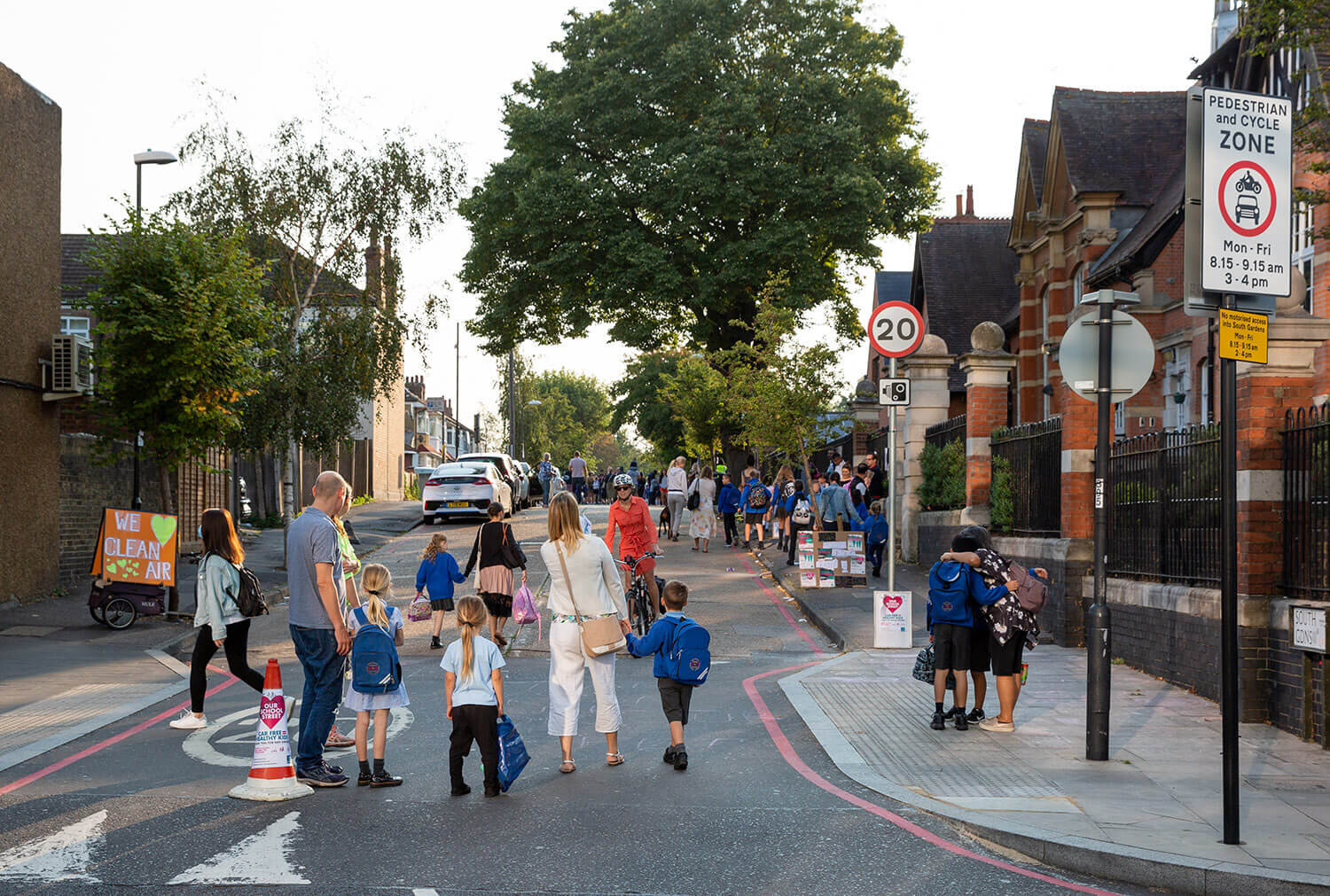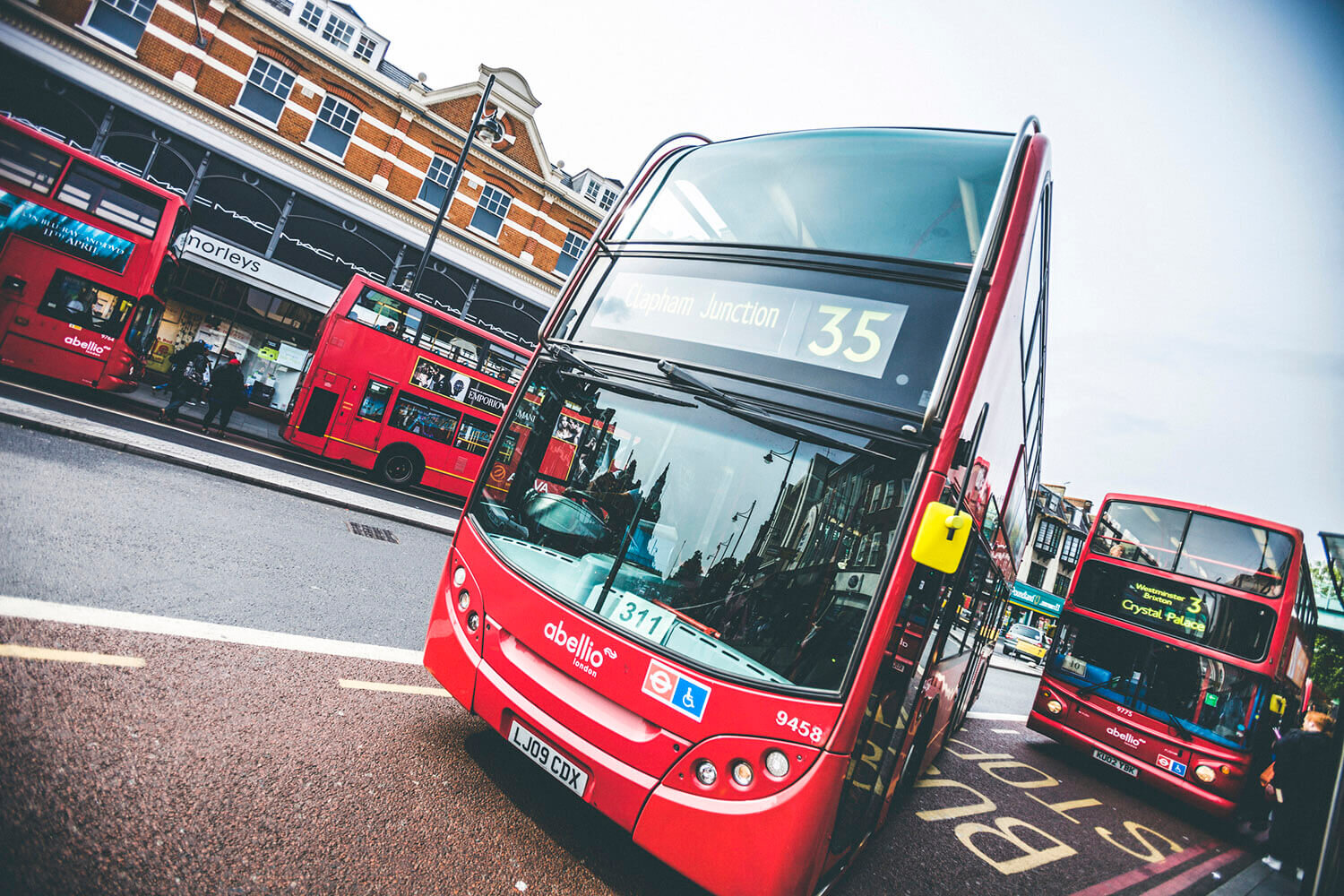
What is Air Pollution?
Air pollution is the release of particles and noxious gases into the atmosphere. These emissions have a huge impact on human health.
Air pollution’s impact on health
There are clear links between air pollution and almost every organ in the body, leading to health conditions including heart and lung disease, asthma and COPD, dementia, miscarriage, stunted lung growth in children, teenage psychotic episodes, and reduced cognitive ability.
The Royal College of Physicians “A Breath of Fresh Air” report found that around 30,000 deaths per year in the UK are estimated to be attributed to air pollution, with an economic cost of £27 billion due to healthcare costs, productivity losses and reduced quality of life. When wider impacts such as dementia are accounted for, the economic cost may be as high as £50bn.
The two pollutants of most concern to us are nitrogen dioxide and particulate matter. Other dangerous pollutants include ozone and sulfur dioxide.
Nitrogen dioxide (NO2)
Road transport is estimated to be responsible for about 50% of NO2 emissions in London and 49% of nitrogen oxides in the UK. Diesel engines, once promoted as more environmentally friendly alternatives to petrol, have contributed significantly to the high levels of NO2.
Imperial College, amongst others, has strong evidence that NO2 is harmful to health, with the most common outcomes being a shortness of breath and a cough. It inflames the lining of the lungs and reduces immunity to lung infections. This is worse for people with asthma.
In London, NO2 levels regularly exceed legal limits, which state that the NO2 annual mean value may not exceed 40 micrograms per cubic metre (µg/m3). In Brixton, London in 2024 that figure was 48 µg/m3. All of London breaches the more stringent 2021 World Health Organization (WHO) guideline limits for NO2.
Particulate matter (PM2.5, PM10)
Particulate matter is tiny particles of liquids or solids, such as metals or rubber, suspended in the air. They mostly originate from wood burning, engine wear, tyres and brakes but can include wind-blown dust. In the UK, road transport and domestic combustion are two of the biggest contributors to PM2.5 emissions. In 2023, road transport contributed 21 per cent of exhaust and 17 per cent of non-exhaust PM2.5 emissions, and domestic combustion contributed 20 per cent of all PM2.5 emissions.
According to the WHO, air pollution-related deaths are most closely linked to PM emissions. The majority of particles that can penetrate the airway are too small to see but are present in air that seems clean. Particles smaller than about 10 micrometres (PM10, about 1/10 of a hair wide) enter the body via the lungs and are too small to be filtered out. They can then settle anywhere in the body, including the brain.

“Road transport is estimated to be responsible for about 50% of nitrogen oxide emissions in London.”
How can we tackle air pollution?
To address the public health crisis posed by air pollution, the government must establish strong legislative targets, aligned with WHO air quality guidelines.
The 2021 Environment Act falls short in effectively reducing air pollution at the pace and scale necessary. The targets set within the Act and subsequent Environmental Improvement Plan do not align with current WHO guidelines. Further, the UK is lagging behind the EU, as in 2024, the EU revised their air quality targets to align more closely with the WHO standards. The UK has not followed suit.
After the 2024 general election, the new government announced a rapid review of the Environment Improvement Plan. This plan sets out how the government plans to deliver each of their goals for improving the environment. The revised plan is due to be published later in 2025, and Mums for Lungs has campaigned for the revisions to include the adoption of current WHO guidelines.
National legislation
Clean Air Zones
Clean Air Zones encourage a move to less polluting vehicles and help to reduce traffic. Charging Clean Air Zones are some of the most effective schemes to reduce air pollution: in Inner London roadside nitrogen dioxide (NO2) reduced by 47 per cent as a result of the Ultra Low Emission Zone; in Bath, NO2 reduced by 26% within the zone and by 27% in the urban area outside the zone, and in Birmingham NO2 emissions reduced by 17%.
School Streets
School Streets are proven to reduce traffic and therefore air pollution and increase safety; not only that but travelling actively to school has been shown to improve learning outcomes.
With 800 in London and with more on the way both in the capital and across the country, we know this scheme is a pragmatic and popular solution to cleaning up the air for children on their way to school.
We want to see all feasible schools, secondaries as well as primaries implementing the scheme, with camera enforcement. We also need alternative options for those schools that cannot have motor traffic restricted on their road, including green screens to reduce the level of pollution within the school grounds, moving school entrances and playgrounds, and implementing controlled parking zones from 8:30am to 6pm to discourage parents from driving to school, in a radius of about 300m around schools.
All levels of government are able to set a vision to be diesel-free by 2030, to protect the health of the next generation. Diesel vehicles are the single biggest contributor to the NOx on our roads, and phasing out diesel cars would be a bold and effective step towards cleaning up our air.
From 2030, new vehicles with internal combustion engines, such as petrol, diesel, and LPG cars, will be banned across the UK, with sales of new hybrid vehicles set to be banned from 2035. Both local and national government has it in their power to implement measures to lose diesel from our roads faster, to help consign diesel to the past in advance of this phase-out.
National government can fast-track the phase-out of diesel vehicles by:
Using legislation to issue a manufacturer recall of all diesel cars that are found to have defeat devices installed.
Establishing a major UK fund worth at least £1 billion, put together by car manufacturers, to support a phase-out.
Providing incentives to encourage the purchase of electric vehicles.
Funding more infrastructure to enable people to switch to active travel options on a larger scale.
Local authorities can:
Set a vision and publicly commit to a diesel-free borough by 2030.
Introduce emissions-based parking tariffs.
Phase out new residential parking permits for diesel cars.
Implement Zero Emission Zones in certain areas.
Create zero-emission loading bays and taxi ranks.
Pedestrianise high street areas, as is common across Europe.
Diesel phase-out
Government has ruled out a ban on wood burning, favouring an educational approach. In the 2023 Environmental Improvement Plan there was an aim set to reduce the amount of smoke that new stoves can emit in Smoke Control Areas, however this did not pass into law.
Domestic combustion contributed 20 per cent of the UK’s PM2.5 emissions in 2023, demonstrating that the burning of wood is a growing problem that needs more than an educational approach.
We are calling on the Government to:
Launch a public health campaign to raise awareness of the dangers of wood burning stoves and open fires.
Provide effective powers to local authorities to stop unlawful burning.
Label wood burning stoves as harmful to better educate consumers.
Phase out domestic wood burning for those who do not need to burn
Wood burning

“TfL’s report into the first year of the Inner London ULEZ revealed a 47% drop in roadside nitrogen dioxide levels.”
What we want the Government and Local Authorities to do
FREQUENTLY ASKED QUESTIONS
Find out the answers to some common air pollution questions.




